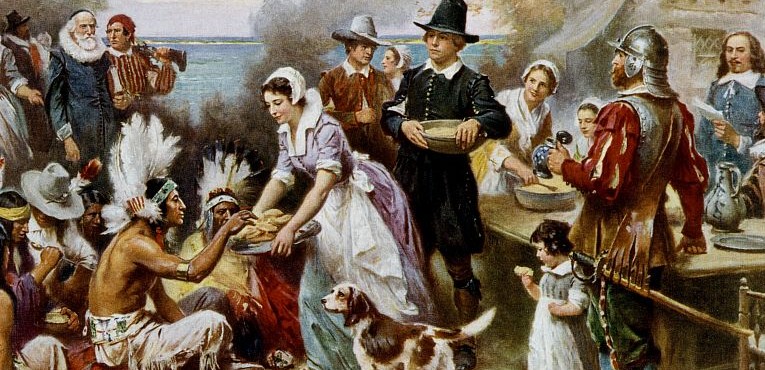
Thanksgiving is a holiday wherein families come together once a year to give thanks to one another, eat turkey, and break wishbones. However, some families may not know where these traditions have come from.
In 1661, English Puritans, also called Pilgrims, settled into what is now known as Mass. as a new opportunity to harvest crops. The Native Americans helped the Pilgrims grow their crops, and as a way of giving thanks, shared in a feast.
Since then, it’s become part of the Thanksgiving tradition to share meals with family, friends, and loved ones as a way of saying thanks for the favors for one another.
Learning the reasons behind customs gives people a better understanding of one another, as well as themselves.
“I believe that our younger generation should be taught the actual history of events that led to the birth of the holiday itself,” Lewis and Clark Enrollment Assistant, Ashlei Wolff, said.
Turkey is a popularly known food American families eat on Thanksgiving, but what some forget is that the pilgrims themselves didn’t eat turkey earlier on.
According to the website, todayifoundout, the first recorded Thanksgiving feast consisted of corn, deer, and several types of fish. Although, historians have reported that pilgrims ate roast goose at the time.
Coolquiz’s website explains how Queen Elizabeth I was a huge fan of roast goose. The English would eat goose in her honor, but after the Pilgrims came to America, turkey later became a substitute. Thus, why it is now part of the tradition to eat turkey.
Turkey isn’t only celebrated as a holiday favorite entree, but also as a symbol of good fortune. During the first Thanksgiving, the Pilgrims introduced the Indians to the old English tradition of breaking the turkey’s collarbone for good luck.
Originally, the English performed this act on chickens, who picked up the tradition from an old Italian community called the Etruscans. The Etruscans believed that chickens were capable of predicting the future based upon the type of grain they ate, and therefore used the collarbones to make wishes.
How this tradition works is that one person holds one end of the collarbone, while someone else holds the other, then they pull until the bone breaks into two pieces. Whoever has the bigger half of the collarbone is given a chance to make a wish.
The Pilgrims altered this tradition from chickens to turkeys once they arrived in America, believing that the turkeys would serve as a good replacement, and it’s remained the same way since.
“The modern-day traditions and practices of Thanksgiving have moved so far from their origins, and been commercialized enough, that the history of the celebration has become more of a fun story than knowledge that would be necessary for the enjoyment of the holiday,” Ashley Richardson, L&C student, said.
Visit http://bit.ly/1zS5yB0 for more information on Thanksgiving Day traditions and their origins.
Contact Darick at dearney@lc.edu




